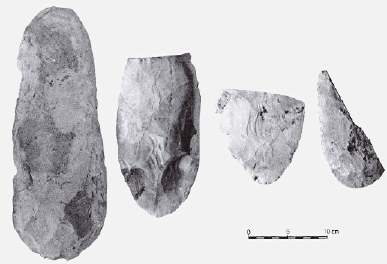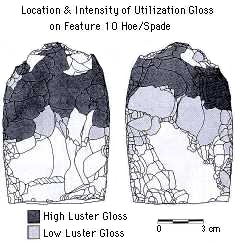
Mill Creek Chert hoes and hoe fragments, Lohmann site.
- Broken chert hoes and hoe fragments litter higher ground in much of the American Bottom. They are found in great numbers in both archaeological surveys as well as excavations of residential sites.
- Broken chert hoes and hoe fragments are often highly polished and show signs of frequent re-sharpening.
- Most hoes are made of a high quality, fine-grained chert from southern Illinois, Mill Creek Chert.
- Caches of two or more Mill Creek Chert hoes are known from archaeological sites. Even broken hoes were cached for later use.
